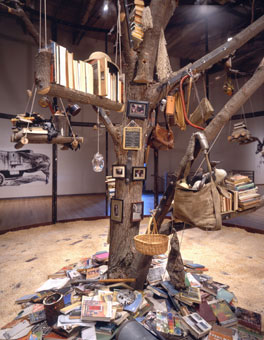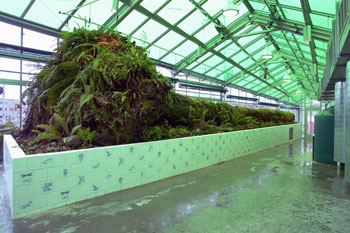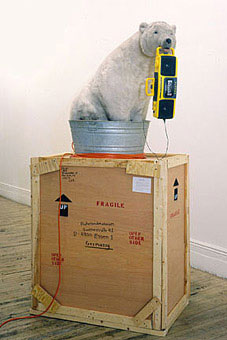
Mark Dion was born in New Bedford, Massachusetts in 1961. He received a BFA (1986) and an honorary doctorate (2003) from the University of Hartford School of Art, Connecticut. Dion’s work examines the ways in which dominant ideologies and public institutions shape our understanding of history, knowledge, and the natural world. The job of the artist, he says, is to go against the grain of dominant culture, to challenge perception and convention. Appropriating archaeological and other scientific methods of collecting, ordering, and exhibiting objects, Dion creates works that question the distinctions between ‘objective’ (‘rational’) scientific methods and ‘subjective’ (‘irrational’) influences. The artist’s spectacular and often fantastical curiosity cabinets, modeled on Wunderkabinetts of the 16th Century, exalt atypical orderings of objects and specimens. By locating the roots of environmental politics and public policy in the construction of knowledge about nature, Mark Dion questions the authoritative role of the scientific voice in contemporary society. He has received numerous awards, including the ninth annual Larry Aldrich Foundation Award (2001). He has had major exhibitions at the Miami Art Museum (2006); Museum of Modern Art, New York (2004); Aldrich Museum of Contemporary Art, Ridgefield, Connecticut (2003); and Tate Gallery, London (1999). Neukom Vivarium (2006), a permanent outdoor installation and learning lab for the Olympic Sculpture Park, was commissioned by the Seattle Art Museum. Dion lives and works in New York.

Watch a clip from Dion’s Art:21 segment:
“My idea of art isn’t necessarily something that provides answers or is decorative or affirmative. I like Goya. I enjoy the still-life tradition, and hunting painting, and things toward the dark side that tend to have a more critical function. That’s what I see as the job of contemporary artists: to function as critical foils to dominant culture. My job as an artist isn’t to satisfy the public. That’s not what I do. I don’t necessarily make people happy. I think the job of the artist is to go against the grain of dominant culture, to challenge perception, prejudice, and convention…I think it’s really important that artists have an agitational function in culture. No one else seems to.”
(taken from the companion book Art in the Twenty-First Century 4, p. 78).

Read more about his work and watch additional clips on his Art:21 webpage here.
Have you experienced Dion’s work in person, or did you have an opportunity to view his segment in one of the hundreds of Art21 Access ’07 events that have been taking place all month? Share your thoughts on Mark Dion by leaving a comment below.



